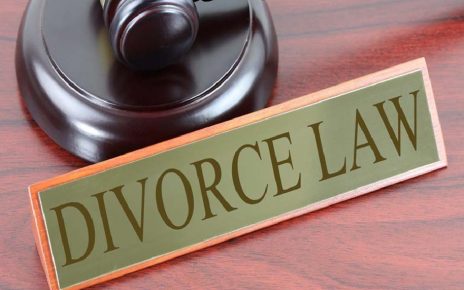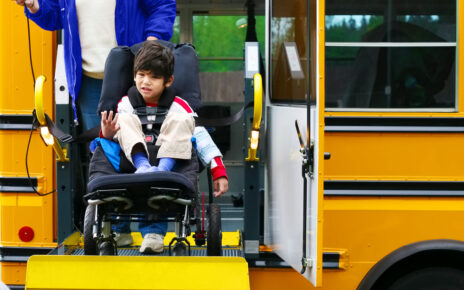When a crash in Staten Island involves a driver from Elizabeth, or a New York construction worker is injured on a New Jersey site, one thing becomes clear fast: borders don’t keep injuries tidy. Cross‑river cases demand precise coordination, knowledge of both states’ rules, and a team that treats logistics like a lifeline. That’s where an experienced New York trial firm working hand‑in‑hand with an Elizabeth Personal Injury Lawyer can make the difference. Sakkas, Cahn & Weiss, LLP has long focused on building those bridges, so victims get seamless advocacy whether their case lands in Manhattan, Newark, or anywhere in between.
Cross-jurisdictional collaboration between New York and New Jersey law firms
The best multi‑state results rarely come from a lone ranger approach. In practice, collaboration means:
- Early case mapping: Identifying where to file, which insurer’s rules apply, and whether federal jurisdiction could streamline issues.
- Shared investigation: Coordinated scene inspections, bilingual witness outreach in Elizabeth and NYC neighborhoods, and aligned discovery plans so nothing slips through the cracks.
- Co‑counsel agreements that add value: New York trial strength coupled with a local Elizabeth Personal Injury Lawyer‘s venue instincts, jury tendencies, courthouse scheduling quirks, and local mediator preferences.
In cross‑river matters, speed is strategy. A New York firm may spearhead liability development while New Jersey counsel handles PIP, provider disputes, or municipal claims notices. Done well, clients experience one unified team, not a relay race with dropped batons.
Sakkas, Cahn & Weiss, LLP often leads complex liability and damages development while partnering with trusted New Jersey attorneys who know Elizabeth’s legal terrain and community dynamics. The result is more leverage in negotiations and fewer surprises at litigation milestones.
Understanding procedural differences in interstate personal-injury filings
Procedure decides outcomes as much as facts. Key New York–New Jersey differences include:
- Statutes of limitations: New York generally provides 3 years for negligence claims: New Jersey typically allows 2 years. The shorter New Jersey clock can control if the filing belongs there, so triaging venue and tolling issues on day one matters.
- Government claims: Suing a city, transit authority, or public hospital? New York requires a Notice of Claim in 90 days for certain entities (e.g., GML §50‑e). New Jersey’s Tort Claims Act also imposes a 90‑day notice. Missing these deadlines can be fatal to the claim.
- No‑fault/PIP: New York’s no‑fault system requires a “serious injury” to sue for pain and suffering. New Jersey drivers may be bound by the “verbal threshold” depending on policy election. Coordinating medical proof to meet the applicable threshold is critical.
- Comparative negligence: New York uses pure comparative negligence, damages are reduced by the plaintiff’s share of fault, no bar. New Jersey uses a modified 51% bar: plaintiffs more than 50% at fault recover nothing.
- Venue selection and long‑arm jurisdiction: Where did the accident occur? Where do defendants reside or do business? Those answers steer venue and service strategies, and sometimes the entire liability theory.
A coordinated team makes these choices deliberately, not reactively, selecting the forum that best serves liability proof and damages presentation while preserving every deadline.
Legal challenges in multi-state vehicle and workplace-injury claims
Interstate vehicle and workplace injuries stack complexities fast:
- Multi‑policy layering: A crash with a New York rideshare vehicle and a New Jersey resident can implicate rideshare coverage, the at‑fault driver’s policy, and UM/UIM from a New Jersey policy, each with different endorsements and offsets.
- Employer/third‑party overlaps: A Queens‑based worker injured on a warehouse job in Elizabeth might have New Jersey workers’ compensation benefits while pursuing a third‑party negligence claim against a property owner or subcontractor in New York or New Jersey. Choice‑of‑law fights can affect liens, set‑offs, and net recovery.
- Serious‑injury thresholds: New York’s categories (fractures, significant disfigurement, 90/180, etc.) demand medical narratives tied to statutory language. New Jersey’s verbal threshold analysis looks to diagnostic proof and defined injury categories under the policy election.
- Trucking and interstate commerce: Federal regs (hours‑of‑service, maintenance logs, ELD data) overlay state rules. Preserving electronic evidence quickly can make or break liability.
Common thread: aligning insurance strategy with forum selection and medical proof. A seasoned Elizabeth Personal Injury Lawyer working with New York trial counsel ensures claims are pled to survive threshold motions on both sides of the Hudson, and positioned for meaningful settlement or trial.
Evidence preservation across state lines for consistent representation
Evidence doesn’t respect borders, and neither should preservation. Practical steps include:
- Immediate spoliation notices to all potential custodians, trucking companies, building owners, rideshare platforms, maintenance vendors, citing their duty to preserve.
- Unified subpoenas under the Uniform Interstate Depositions and Discovery Act (UIDDA), adopted in both New York and New Jersey, to obtain out‑of‑state records without reinvention.
- Coordinated medical documentation: Consistent ICD codes, imaging, and functional assessments so treating physicians and IME rebuttals speak the same language in both venues.
- Digital forensics: Pulling dashcam, ECM, telematics, and site CCTV before overwrite cycles. For construction cases, preserving safety meeting minutes, incident reports, and job‑site photos stored in cloud platforms.
- Witness care and access: Bilingual outreach in Elizabeth’s Spanish‑ and Portuguese‑speaking communities and NYC’s diverse neighborhoods can surface essential testimony others miss.
Sakkas, Cahn & Weiss, LLP emphasizes early, cross‑border preservation protocols so the narrative doesn’t fracture when a case straddles two systems. One file, one strategy, consistent proof.
Client communication and bilingual support enhancing accessibility
Stress peaks when a case crosses state lines. Clear, frequent communication lowers it. Hallmarks of effective support include:
- Bilingual intake and updates (English/Spanish, and interpreter access for Portuguese and other languages common in Elizabeth) so clients never feel sidelined by jargon or geography.
- Centralized case portals and text‑friendly updates for medical authorizations, IME scheduling, and deposition prep.
- Plain‑spoken explanations of no‑fault, lien rights, thresholds, and timelines, delivered at the right moments, not buried in fine print.
- Coordination with treating providers in both states to streamline PIP/no‑fault billing and reduce surprise denials.
Clients shouldn’t have to decode two legal systems while they heal. Partnering a New York trial team with an Elizabeth Personal Injury Lawyer keeps the human side front and center, every call returned, every question answered.
How Sakkas, Cahn & Weiss fosters regional legal partnerships
Sakkas, Cahn & Weiss, LLP has built a practice model that treats the Hudson River as a bridge, not a border. Their approach includes:
- Strategic co‑counseling: Pairing New York trial depth with vetted New Jersey counsel for Elizabeth, Newark, and Hudson County matters. They share playbooks on deposition sequencing, motion practice, and jury themes that resonate locally.
- Rapid‑response investigation: Field investigators and experts move quickly on multi‑vehicle crashes, scaffold and ladder accidents, rideshare incidents, and premises injuries, often within 24–48 hours.
- Data‑driven negotiation: Damages models that factor venue‑specific verdict ranges, lien resolution forecasts, and likely threshold motions. Insurers see the trial posture early, not just at mediation.
- Trial‑ready mindset: From the first letter, the file is built for the courtroom, photographs, measurements, human‑factor analysis, and life‑care planning where warranted.
Whether acting as lead counsel in New York or partnering with an Elizabeth Personal Injury Lawyer in New Jersey, the firm’s goal is simple: remove friction, maximize leverage, and let the injured person focus on recovery.





